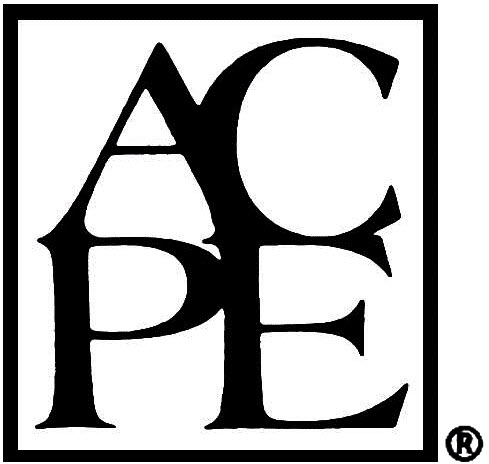A Guide for the Management of Crohn’s Disease
Disease State Management/Drug Therapy CE for Pharmacists
Are you a Pharmacy Tech? Check out the Pharmacy Tech version of this course.
Course Summary
Crohn’s disease (CD) is a chronic inflammatory bowel disease that affects the gastrointestinal tract. This continuing education activity will review the etiology, pathophysiology, and classification of CD. The appropriate diagnosis and treatment of CD is critical to maintaining a quality of life for patients and avoiding complications from the disease. This includes the ability to differentiate between CD and ulcerative colitis. This activity will also discuss available pharmacologic treatments, including mechanisms of action, side effect profiles, and recommended placement in therapy. Finally, it will highlight the role of pharmacists and pharmacy technicians as members of interdisciplinary care teams.
Describe the etiology and pathophysiology of Crohn's disease
Compare and contrast pharmacologic therapies for Crohn’s disease
Identify mechanisms of action and side effect profiles of medications used to treat Crohn’s disease
Recall medication counseling points for patients with Crohn’s disease
Course Syllabus
I. Introduction
II. Overview of Crohn’s Disease
III. Etiology and Epidemiology
IV. Risk Factors
A. The Microbiome
B. Genetics
C. Immune-Mediated Risks
D. Environment and Lifestyle
V. Pathophysiologic Features of Crohn’s Disease
A. Manifestations of IBD in the GI tract
B. Extraintestinal Manifestations of IBD
VI. Clinical Presentation of Crohn’s Disease
VII. Diagnosing Crohn’s Disease
A. Laboratory Testing
B. Imaging
C. Determining Disease Activity
VIII. Management of Crohn’s Disease
A. Nonpharmacologic and Lifestyle Approaches
B. Pharmacologic Approaches
C. Mild-to-Moderately Severe Disease and Low-Risk Disease
D. Mesalamine
E. Corticosteroids
F. Antimicrobial therapy
G. Moderate-to-Severe Disease/Moderate-to-High-Risk Disease
H. Treating Severe/Fulminant Disease
I. Novel Agents
IX. Drug Monitoring
X. Surgical Options
XI. Maintaining Remission
XII. The Role of the Pharmacy Technician
XIII. Summary
- Read the course objectives and faculty planner disclosure
- Read the course material
- Complete the post-test with a minimum score of 70% and complete the course evaluation form.
- Results are automatically submitted to CPE Monitor
Faculty Planner Disclosure
The following individuals were involved in developing this activity: Liz Fredrickson, PharmD, BPCS, and Pamela Sardo, PharmD, BS. Pamela Sardo and Liz Fredrickson have no conflicts of interest or financial relationships regarding the subject matter discussed. There are no financial relationships or commercial or financial support relevant to this activity to report or disclose by RxCe.com or any of the individuals involved in the development of this activity.
Unlabeled Use Disclosures
The information provided in this course is general in nature and it is solely designed to provide participants with continuing education credit(s). This course and materials are not meant to substitute for the independent, professional judgment of any participant regarding that participant’s professional practice, including but not limited to patient assessment, diagnosis, treatment and/or health management. Medical and pharmacy practices, rules, and laws vary from state to state, and this course does not cover the laws of each state; therefore, participants must consult the laws of their state as they relate to their professional practice. Healthcare professionals, including pharmacists and pharmacy technicians, must consult with their employer, healthcare facility, hospital, or other organization, for guidelines, protocols, and procedures they are to follow. The information provided in this course does not replace those guidelines, protocols, and procedures but is for academic purposes only, and this course’s limited purpose is for the completion of continuing education credits. Participants are advised and acknowledge that information related to medications, their administration, dosing, contraindications, adverse reactions, interactions, warnings, precautions, or accepted uses are constantly changing, and any person taking this course understands that such person must make an independent review of medication information prior to any patient assessment, diagnosis, treatment and/or health management. Any discussion of off-label use of any medication, device, or procedure is informational only and such uses are not endorsed hereby. Nothing contained in this course represents the opinions, views, judgments, or conclusions of RxCe.com LLC. RxCe.com LLC is not liable or responsible to any person for any inaccuracy, error, or omission with respect to this course, or course material.
Computer Hardware/Software Requirements
Please ensure the device you plan to use meets these requirements and specifications:
- Operating System: Windows 7,8,10, or 11 /Mac OS X 10.9 or later/iOS/Android
- Supported Browsers: Microsoft Edge, Firefox, Google Chrome, Safari, Opera
- A connection to the internet
- For Live Webinars or Conferences: GoToWebinar application for iOS, Android, Mac, or PC. You cannot 'call into' a live conference.
Rating: 3.74/5
Based on the ratings of 944 customers
- Target Audience: Pharmacist
- Secondary Audiences: This educational activity is also for other healthcare professionals, such as nurses, physicians, or others who may be part of a healthcare team and may be interested in this educational topic. A healthcare team approach to patient care may be discussed in this activity, as applicable. No state board or professional organization has evaluated this activity to determine whether it meets the continuing education requirements of nurses, physicians, or other professions not listed under the “Target Audience” described above. Always verify with individual employers or supervisors whether they will accept this educational activity upon completion.
- Contact Hours: 2.0 (0.2 CEUs)
- Activity Release Date: 4/16/2024}
- Activity Expiration Date: 4/16/2027}
- Activity Type: Knowledge
- UAN: 0669-0000-24-047-H01-P
- Topic: Disease State Management/Drug Therapy
- CeBroker Number: 20-1196952
Faculty:

RxCe.com, LLC is accredited by the Accreditation Council for Pharmacy Education as a provider of continuing pharmacy education.